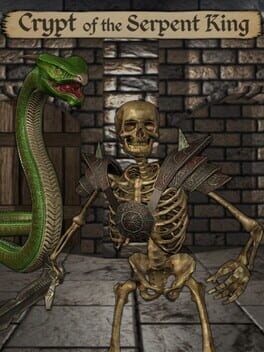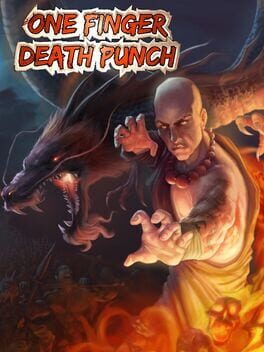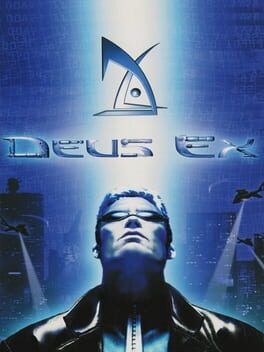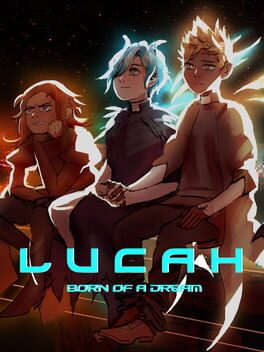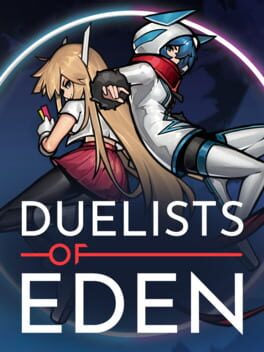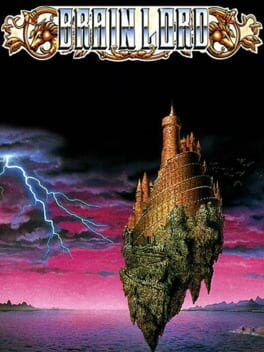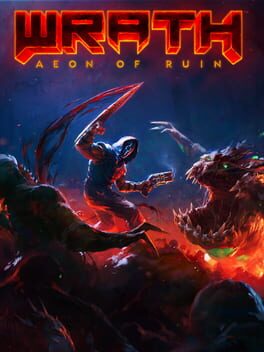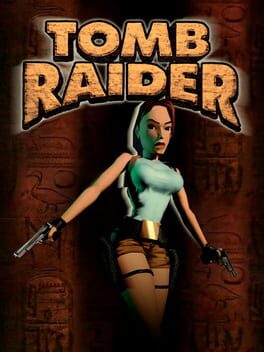Silverhand
BACKER
783 Reviews liked by Silverhand
Pseudoregalia
2023
I personally really like it when metroidvania gives freedom and doesn't lock the player into a sequence of levels and abilities that can be unlocked in a certain order.
But that is not even the main point of Pseudoregalia, the movement and platforming in this game are sublime. Mostly all the abilities have additional ways to employ them that can add depth and creativity to how you traverse levels. During my entire playtime, I was finding so many different ways to utilize my current move set to get to ledges that were otherwise out of reach. Mastering them to solve such kinds of puzzles is so satisfying.
I truly hope Rittzler considers making a sequel one day. Sybil needs more adventures and fans!
9.5/10
But that is not even the main point of Pseudoregalia, the movement and platforming in this game are sublime. Mostly all the abilities have additional ways to employ them that can add depth and creativity to how you traverse levels. During my entire playtime, I was finding so many different ways to utilize my current move set to get to ledges that were otherwise out of reach. Mastering them to solve such kinds of puzzles is so satisfying.
I truly hope Rittzler considers making a sequel one day. Sybil needs more adventures and fans!
9.5/10
I originally played one finger death punch on Xbox indie in my nan's living room, which is crazy to think about now, 11 years on, but point is I never beat it at the time. Coming back to this as an adult who actually plays games on difficulties above easy, I managed to do it in about a week, which is both a mix of experience and this being a really difficult game to put down.
The core gameplay is an on rails fighter revolving around only pressing two buttons to defeat vague enemies coming from two directions. As adamant as they are that it isn't a rhythm game, for the sake of simplicity, it's a lot like a rhythm game.
For how simple it seems, it's extremely fun, the simplicity of gameplay allows for more focus to be put on the levels themselves and the difficulty curve to make it all feel as satisfying as possible. There was no point where a stage felt out of place or incredibly difficult in spite of the monumental changes between the early and later stages.
While mob rounds are this games bread and butter, it does have a massive variety of other stages it throws in, a lot of these feel quite gimmicky, some are just worse versions of mob rounds or they're focused too much on one thing that they're just extremely easy, but things like the light sword rounds and thunderstorm rounds are incredible and really stop the game growing stale.
There are issues, especially as the speed reaches above 200% visual clarity becomes a massive issue, enemies can cover weapons, thrown or not, and can result in you miscounting and missing or taking a hit. A pretty huge issue is that your character stops for a fraction of a second when equipping weapons which can result in a hit, it's so short that it shouldn't be a problem, but with the amount of enemies in later stages it does become one.
Overall, it's a fun game, that's definitely worth the tiny asking price, though I could definitely see it growing stale for others far quicker than it did for me.
The core gameplay is an on rails fighter revolving around only pressing two buttons to defeat vague enemies coming from two directions. As adamant as they are that it isn't a rhythm game, for the sake of simplicity, it's a lot like a rhythm game.
For how simple it seems, it's extremely fun, the simplicity of gameplay allows for more focus to be put on the levels themselves and the difficulty curve to make it all feel as satisfying as possible. There was no point where a stage felt out of place or incredibly difficult in spite of the monumental changes between the early and later stages.
While mob rounds are this games bread and butter, it does have a massive variety of other stages it throws in, a lot of these feel quite gimmicky, some are just worse versions of mob rounds or they're focused too much on one thing that they're just extremely easy, but things like the light sword rounds and thunderstorm rounds are incredible and really stop the game growing stale.
There are issues, especially as the speed reaches above 200% visual clarity becomes a massive issue, enemies can cover weapons, thrown or not, and can result in you miscounting and missing or taking a hit. A pretty huge issue is that your character stops for a fraction of a second when equipping weapons which can result in a hit, it's so short that it shouldn't be a problem, but with the amount of enemies in later stages it does become one.
Overall, it's a fun game, that's definitely worth the tiny asking price, though I could definitely see it growing stale for others far quicker than it did for me.
Deus Ex
2000
Definitely a game that started showing it's age a while ago, especially visually, both in a graphical sense and in a clarity sense, but it would be quite unfair to judge it based on this, as it's still a cut above a lot games that were released at the time.
Deus Ex is an immersive sim in the same vein as Thief or System Shock, all of which are structured into distinct levels and have a focus on offering the player a number of different solutions to obstacles presented throughout. A large part of where this game shines is just how well it does this, often you'll see a number of different paths available to get through any section of Deus Ex, encouraging exploration and experimentation. While you could lockpick a door, you could also hack a nearby power generator to find a key, or you could've found a code earlier that lets you bypass both of those options. This process is similarly applicable to combat throughout the game, absent is the focus on stealth from future Deus Ex games, so there is always the binary choice of approaching quietly or loudly and then further how you want to go about doing either. It's this freedom of approach that both makes the game replayable and allows for agency in how you skill JC without feeling locked out of any content or considerably weaker than if you had spec'd into other things.
Though often referred to as an RPG, the connection is tenuous at best, very little Role Playing is done throughout, having more in common with a title like Cruelty Squad than any actual modern RPGs. The closest thing is the skill system which more exists just to feed into the ImSim elements of the game than do anything by itself, and there is very little in how you play that affects the story outside of some small acknowledgments very early in.
That's not to diminish the writing here though, what's on offer is phenomenal, leaning heavily into conspiracies prevalent at the time, Deus Ex does an incredible job world building, both through it's environments and the story, and has an extremely strong narrative to go along with it.
Overall, Deus Ex was an incredibly enjoyable experience, and very impressive from both a game-design and story-telling perspective. Though maybe not as ground breaking as when it was first released, it still holds up unreasonably well for a 24 year old game.
However, I was promised you could fly when it was raining if you maxed out swimming and then was sorely disappointed to find out I had been gibed so it's basically unplayable.
Deus Ex is an immersive sim in the same vein as Thief or System Shock, all of which are structured into distinct levels and have a focus on offering the player a number of different solutions to obstacles presented throughout. A large part of where this game shines is just how well it does this, often you'll see a number of different paths available to get through any section of Deus Ex, encouraging exploration and experimentation. While you could lockpick a door, you could also hack a nearby power generator to find a key, or you could've found a code earlier that lets you bypass both of those options. This process is similarly applicable to combat throughout the game, absent is the focus on stealth from future Deus Ex games, so there is always the binary choice of approaching quietly or loudly and then further how you want to go about doing either. It's this freedom of approach that both makes the game replayable and allows for agency in how you skill JC without feeling locked out of any content or considerably weaker than if you had spec'd into other things.
Though often referred to as an RPG, the connection is tenuous at best, very little Role Playing is done throughout, having more in common with a title like Cruelty Squad than any actual modern RPGs. The closest thing is the skill system which more exists just to feed into the ImSim elements of the game than do anything by itself, and there is very little in how you play that affects the story outside of some small acknowledgments very early in.
That's not to diminish the writing here though, what's on offer is phenomenal, leaning heavily into conspiracies prevalent at the time, Deus Ex does an incredible job world building, both through it's environments and the story, and has an extremely strong narrative to go along with it.
Overall, Deus Ex was an incredibly enjoyable experience, and very impressive from both a game-design and story-telling perspective. Though maybe not as ground breaking as when it was first released, it still holds up unreasonably well for a 24 year old game.
However, I was promised you could fly when it was raining if you maxed out swimming and then was sorely disappointed to find out I had been gibed so it's basically unplayable.
Really incredible story told in a unique and abstract way, facilitated by some extremely fun top-down souls-like combat.
The art-style here is what probably grabs most people when they first look at the game, and it is incredible how much is able to be achieved and conveyed with what are essentially coloured scribbles made to look as unsettling as possible. There's not really any points where attack animations feel unclear, or hit boxes felt wrong, which is really impressive.
Along with this, the game boasts a really strong soundtrack, which definitely helps with some of the more difficult sections of the game. From industrial sharp tracks like The Underground to more melancholic ones like A Dream, there's a lot on offer here, and it all sounds really great while maintaining the whole unsettling feeling of the game.
As mentioned before, the gameplay is very souls-like, with slightly more hack and slash elements mixed into combat. There are some exploration elements, to get new virtues, mantras, or familiars (passives, weapons, and ranged skills respectively) and a lot of combinations between those three to personalize combat to your own playstyle, or just to keep things fresh while going through. Combat itself feels really great for the most part, parrying feels great, near enough every enemy has a parry-able attack and most have only parry-able attacks, so there's definitely reward for players who want to be more proactive, while also not punishing more reactive playstyles. The biggest issue I can think of is the lack of any i-frames after being hit but also a time where you can't dodge, meaning that it's really easy to get chain attacked and die after only one mistake, which can feel unfair with some of the more annoying attacks in the game.
I think the real surprising thing was how good the writing was, while definitely unconventional in both how it's conveyed to the player and how it's written, there's a really heart-wrenching and beautiful story here, with some absolutely incredible queer representation and themes of shifting relationships and finding oneself approached in really mature and thoughtful ways; and the want to find out more about the world and characters definitely helps to get through some of the harder sections of this game.
The only major flaw I can really think is the in-game timer, while I think most people will beat the normal game in only one or two playthroughs, the corruption meter becomes way more punishing on NG+. Luckily, there's a really cool way of keeping it down introduced, but I could definitely see it being a turn-off for a lot of people, especially considering that it is arguably the hardest part of NG+ apart from a potential oversight that can make it entirely negligible. This all is definitely alleviated by each playthrough only really taking a max of 4 or 5 hours, so I'm very willing to accept it as a fun challenge as you don't really lose all that much from a lost run.
I really loved this though, I'm a sucker for more abstract art styles and story telling, which this has in abundance; and while I can definitely see the challenge falling into being really aggravating for a lot of people, I had a lot of fun over my three or four playthroughs to get the true ending, would love to go back and do the DLC at some point and really looking forward to the follow up.
The art-style here is what probably grabs most people when they first look at the game, and it is incredible how much is able to be achieved and conveyed with what are essentially coloured scribbles made to look as unsettling as possible. There's not really any points where attack animations feel unclear, or hit boxes felt wrong, which is really impressive.
Along with this, the game boasts a really strong soundtrack, which definitely helps with some of the more difficult sections of the game. From industrial sharp tracks like The Underground to more melancholic ones like A Dream, there's a lot on offer here, and it all sounds really great while maintaining the whole unsettling feeling of the game.
As mentioned before, the gameplay is very souls-like, with slightly more hack and slash elements mixed into combat. There are some exploration elements, to get new virtues, mantras, or familiars (passives, weapons, and ranged skills respectively) and a lot of combinations between those three to personalize combat to your own playstyle, or just to keep things fresh while going through. Combat itself feels really great for the most part, parrying feels great, near enough every enemy has a parry-able attack and most have only parry-able attacks, so there's definitely reward for players who want to be more proactive, while also not punishing more reactive playstyles. The biggest issue I can think of is the lack of any i-frames after being hit but also a time where you can't dodge, meaning that it's really easy to get chain attacked and die after only one mistake, which can feel unfair with some of the more annoying attacks in the game.
I think the real surprising thing was how good the writing was, while definitely unconventional in both how it's conveyed to the player and how it's written, there's a really heart-wrenching and beautiful story here, with some absolutely incredible queer representation and themes of shifting relationships and finding oneself approached in really mature and thoughtful ways; and the want to find out more about the world and characters definitely helps to get through some of the harder sections of this game.
The only major flaw I can really think is the in-game timer, while I think most people will beat the normal game in only one or two playthroughs, the corruption meter becomes way more punishing on NG+. Luckily, there's a really cool way of keeping it down introduced, but I could definitely see it being a turn-off for a lot of people, especially considering that it is arguably the hardest part of NG+ apart from a potential oversight that can make it entirely negligible. This all is definitely alleviated by each playthrough only really taking a max of 4 or 5 hours, so I'm very willing to accept it as a fun challenge as you don't really lose all that much from a lost run.
I really loved this though, I'm a sucker for more abstract art styles and story telling, which this has in abundance; and while I can definitely see the challenge falling into being really aggravating for a lot of people, I had a lot of fun over my three or four playthroughs to get the true ending, would love to go back and do the DLC at some point and really looking forward to the follow up.
Duelists of Eden
2024
Brain Lord
1994
Things I Liked About Brain Lord
- Being accompanied by party members in an action RPG, but not having them at my side was a neat twist. Instead they appeared throughout dungeons, kind of reminding me I wasn't alone even though I basically was exploring alone.
- I liked its sense of personality for otherwise being a pulpy action RPG - the item descriptions, various NPCs, or just the funny things like not getting any loot from the first dungeon because your friends broke into the treasure room from the back while you went through the boss in the front. Stuff like tables being smashable, or NPC personalities being told through the decorations in their house are nice.
- The hints in the dungeons' rooms felt like.. friendly in a 4th-wall breaking way. Something funny about all the random puzzles. Idk. It felt like someone just showing me some cool stuff. I guess this didn't always help the world's overall feel, but I appreciated it didn't feel too self-serious.
- The interconnected world. I liked how it never zoomed out to show a world map, instead it just feels like there's a little tale being told about the area around these two neighboring towns. Reminded me of Ys 5's world a bit.
--
The level design style is worth noting - the game is literally two towns, a few small fields and then five 4-floor dungeons. It's funny how some of these are accessed - one through bug tunnels under the town, another through a hole someone was digging under their shop.
I think the levels' pacing felt a little long - of all things, reminding me of my game Even the Ocean (its platforming-hevay levels are usually split into 4 big chunks, played one after another). The problem with ETO was there wasn't much sense of drama going from chunk to chunk, so it could feel like 40 platforming ideas laid out end to end.
Likewise, in Brain Lord, the levels sometimes fail to feel like "climbing higher into a tower," etc. I really like the idea of these huge dungeons with warp points in between them, but there was something to be desired with actually conveying the feeling of "Tower of Light" or "Platinum Shrine" or "Ice Castle". That being said, each level DID have unique spatial qualities that made them feel like their names, it's just I think they overall start to get kind of long, with many staircases going between floors. The issue is that it starts to feel like a labyrinthine maze - fine if that's the narrative theme of the dungeon - but it's not, so there's a weirdness there.
I also have a number of complaints about combat or level design mechanics, but I'll leave those out, overall it was a charming game!
- Being accompanied by party members in an action RPG, but not having them at my side was a neat twist. Instead they appeared throughout dungeons, kind of reminding me I wasn't alone even though I basically was exploring alone.
- I liked its sense of personality for otherwise being a pulpy action RPG - the item descriptions, various NPCs, or just the funny things like not getting any loot from the first dungeon because your friends broke into the treasure room from the back while you went through the boss in the front. Stuff like tables being smashable, or NPC personalities being told through the decorations in their house are nice.
- The hints in the dungeons' rooms felt like.. friendly in a 4th-wall breaking way. Something funny about all the random puzzles. Idk. It felt like someone just showing me some cool stuff. I guess this didn't always help the world's overall feel, but I appreciated it didn't feel too self-serious.
- The interconnected world. I liked how it never zoomed out to show a world map, instead it just feels like there's a little tale being told about the area around these two neighboring towns. Reminded me of Ys 5's world a bit.
--
The level design style is worth noting - the game is literally two towns, a few small fields and then five 4-floor dungeons. It's funny how some of these are accessed - one through bug tunnels under the town, another through a hole someone was digging under their shop.
I think the levels' pacing felt a little long - of all things, reminding me of my game Even the Ocean (its platforming-hevay levels are usually split into 4 big chunks, played one after another). The problem with ETO was there wasn't much sense of drama going from chunk to chunk, so it could feel like 40 platforming ideas laid out end to end.
Likewise, in Brain Lord, the levels sometimes fail to feel like "climbing higher into a tower," etc. I really like the idea of these huge dungeons with warp points in between them, but there was something to be desired with actually conveying the feeling of "Tower of Light" or "Platinum Shrine" or "Ice Castle". That being said, each level DID have unique spatial qualities that made them feel like their names, it's just I think they overall start to get kind of long, with many staircases going between floors. The issue is that it starts to feel like a labyrinthine maze - fine if that's the narrative theme of the dungeon - but it's not, so there's a weirdness there.
I also have a number of complaints about combat or level design mechanics, but I'll leave those out, overall it was a charming game!
Wrath: Aeon of Ruin
2019
Wrath is the real Quake II.
In most ways, the game is just pretty good.
There are 9 weapons, all with alt-fires, separate ammo types (meaning no weapon gets superceded), and large differences in how they operate. Great.
Unfortunately, they all feel just a tiny bit too weak, the feedback when hitting enemies is underwhelming, most of the alt-fires aren't too useful, a lack of weapon wheel or even ammo display means you spend a lot of time just scrolling through them to keep track of your resources, and the effort put into making them all useful for the entire game resulted in the arsenal feeling fairly flat. There's no weapon you get to use as a treat, you're never stuck with a gun that's difficult to use for a certain situation, no gun is particularly hard to incorporate into your fights. It's solid and just varied enough, but not too exciting.
The enemy designs are good. There are different types of attacks and projectiles they use, different types and speeds of movement, and the encounters are mostly well designed.
On the flip side: some enemy types outstay their welcome, none have weak points worth aiming for, and none are weak to particular weapons or require very specific strategies. Taking damage also staggers some enemies, but the mechanic is pretty annoying due to its inconsistency.
Oh, and I'm not the biggest fan of how they behave - most enemy types keep attacking you for a really, really long time without taking a break, as long as you don't break the sightline. That means there's no organic rhythm to the combat that you might find in many modern games that like putting you up against overwhelming numbers of foes.
This "good, but not quite there" pattern is applicable to other aspects of the game, like the save system (it's pretty unique, but doesn't lead to anything interesting in practice) and movement (it's fast and the melee weapon's dash allows for some rad platforming, but the physics completely fall apart on sloped and bumpy surfaces).
However, the real draw of this title is in the level design. It feels like the levels were made by someone who started Quake mapping in '96 and simply never stopped.
The maps are very large and have impressively elaborate layouts, great attention to detail, strong art direction, good encounter design, tons of secrets, and opportunities for small skips, optimisations or sequence breaks around every other corner.
If anything, the levels feel a bit too ambitious at times - the freedom to sequence break can mess up some spawn triggers, levels take a pretty long time to finish, the amount of secrets can cause you to explore so thoroughly that you sequence break on accident a lot, and because there's so much to find, the actual rewards you get have to be pretty mild to avoid breaking the game's balance.
Still, if you love pre-Half-Life FPS level design, this is probably where that style has reached its peak.
In most ways, the game is just pretty good.
There are 9 weapons, all with alt-fires, separate ammo types (meaning no weapon gets superceded), and large differences in how they operate. Great.
Unfortunately, they all feel just a tiny bit too weak, the feedback when hitting enemies is underwhelming, most of the alt-fires aren't too useful, a lack of weapon wheel or even ammo display means you spend a lot of time just scrolling through them to keep track of your resources, and the effort put into making them all useful for the entire game resulted in the arsenal feeling fairly flat. There's no weapon you get to use as a treat, you're never stuck with a gun that's difficult to use for a certain situation, no gun is particularly hard to incorporate into your fights. It's solid and just varied enough, but not too exciting.
The enemy designs are good. There are different types of attacks and projectiles they use, different types and speeds of movement, and the encounters are mostly well designed.
On the flip side: some enemy types outstay their welcome, none have weak points worth aiming for, and none are weak to particular weapons or require very specific strategies. Taking damage also staggers some enemies, but the mechanic is pretty annoying due to its inconsistency.
Oh, and I'm not the biggest fan of how they behave - most enemy types keep attacking you for a really, really long time without taking a break, as long as you don't break the sightline. That means there's no organic rhythm to the combat that you might find in many modern games that like putting you up against overwhelming numbers of foes.
This "good, but not quite there" pattern is applicable to other aspects of the game, like the save system (it's pretty unique, but doesn't lead to anything interesting in practice) and movement (it's fast and the melee weapon's dash allows for some rad platforming, but the physics completely fall apart on sloped and bumpy surfaces).
However, the real draw of this title is in the level design. It feels like the levels were made by someone who started Quake mapping in '96 and simply never stopped.
The maps are very large and have impressively elaborate layouts, great attention to detail, strong art direction, good encounter design, tons of secrets, and opportunities for small skips, optimisations or sequence breaks around every other corner.
If anything, the levels feel a bit too ambitious at times - the freedom to sequence break can mess up some spawn triggers, levels take a pretty long time to finish, the amount of secrets can cause you to explore so thoroughly that you sequence break on accident a lot, and because there's so much to find, the actual rewards you get have to be pretty mild to avoid breaking the game's balance.
Still, if you love pre-Half-Life FPS level design, this is probably where that style has reached its peak.
Picross 3D: Round 2
2015
major props to hal lab for avoiding cashing in on yearly picross 3d releases like in the 2d series; round 2 is a complete overhaul of the original concept. the original picross 3d struggled with integrating its 3d nature into the actual puzzle solving, as the game's loop involved slicing its three-dimensional voxel sculptures into two-dimensional slices, where row hints pointing towards the player had next-to-no bearing on the solution of any given slice. round 2 instantly solves that by transforming the game's mechanics into an adaptation of color picross from the main series, where instead of chiseling out a monochrome image, you instead have to deal with multiple colors on each line. hints perpendicular to a slice now show the possible colors for that particular block, and thus the loop now involves checking hints on all three axes instead of just the slice's primary two. switching to colors also vastly increases the potential number of hint arrangements. as in the first game, each hint may indicate an unbroken string of blocks, two separate strings of blocks, or three+ strings of blocks, but now each of the two colors can have its own variable number of strings per row. the amount of different idioms that arise from this far surpass the original game.
what makes this particular interesting is that the coloration of the blocks is not random or chosen purely mechanically: it actually reflects the construction of each puzzle. the voxels of the original game are now marked blue, and new, variably shaped, curved blocks are marked orange. this addition adds substantial context to the chiseling process: compared to the rectangular jumble of the original, you can now clearly make out the structure of what you're building over time. while aesthetically pleasing in its own right, this also assists with the mental leg work, as educated guesses can be made much more easily with a rough idea of the puzzle's shape and edges. this creates some pseudo-idioms in its own right as well: for example, edges with a taper at either end generally appear as a single blue string and then two one-block orange strings. the game can get quite inscrutable at times without some real brute forcing of all the different possibilities, so the organic natures of the game's mechanical structures eases some of the tedium and allows for some guesswork.
I played a couple more rounds of the original just to feel it out, and honestly playing this has dampened my enthusiasm for that entry. so many QoL additions here, from the ability to swipe across the screen to break/paint a bunch of blocks in one go to finally being able to isolate the edge-most slice from any direction. the structure here has been changed from tiered assortments of puzzles from easy to hard to thematically driven "books" of puzzles, with the easy/normal/hard selection individualized for each puzzle. goes a long way in making the on-ramp smooth coming out of the original; no need to slog through the piss-easy stuff if you already have some experience with the concept. the ranking system is also much more granular, with your amount of misses (now including incorrect painting, unlike the first title) and time taken now converted to a numeric score, which gets multiplied against the chosen difficulty of the puzzle to get your final score and rank. also a testament to how difficult this game can get: later puzzles can have top "rainbow" ranks allow for 25-30 minutes on a single puzzle with up to three or four misses. the very final puzzle in the game took me over 45 min!
what makes this particular interesting is that the coloration of the blocks is not random or chosen purely mechanically: it actually reflects the construction of each puzzle. the voxels of the original game are now marked blue, and new, variably shaped, curved blocks are marked orange. this addition adds substantial context to the chiseling process: compared to the rectangular jumble of the original, you can now clearly make out the structure of what you're building over time. while aesthetically pleasing in its own right, this also assists with the mental leg work, as educated guesses can be made much more easily with a rough idea of the puzzle's shape and edges. this creates some pseudo-idioms in its own right as well: for example, edges with a taper at either end generally appear as a single blue string and then two one-block orange strings. the game can get quite inscrutable at times without some real brute forcing of all the different possibilities, so the organic natures of the game's mechanical structures eases some of the tedium and allows for some guesswork.
I played a couple more rounds of the original just to feel it out, and honestly playing this has dampened my enthusiasm for that entry. so many QoL additions here, from the ability to swipe across the screen to break/paint a bunch of blocks in one go to finally being able to isolate the edge-most slice from any direction. the structure here has been changed from tiered assortments of puzzles from easy to hard to thematically driven "books" of puzzles, with the easy/normal/hard selection individualized for each puzzle. goes a long way in making the on-ramp smooth coming out of the original; no need to slog through the piss-easy stuff if you already have some experience with the concept. the ranking system is also much more granular, with your amount of misses (now including incorrect painting, unlike the first title) and time taken now converted to a numeric score, which gets multiplied against the chosen difficulty of the puzzle to get your final score and rank. also a testament to how difficult this game can get: later puzzles can have top "rainbow" ranks allow for 25-30 minutes on a single puzzle with up to three or four misses. the very final puzzle in the game took me over 45 min!
Super Metroid
1994
Tomb Raider
1996
I actually find this pretty compelling, almost relaxing. Played 2.5 stages.
The art and ambience in particular is stunning, I love the use of light and vegetation. Spatially it's like this minimalist take on early FPS shooters... the secrets, the weird score popup at the end of levels. The lack of HUD elements in gameplay and minimal save points, no guidance is really nice.
That being said! The controls are really really bad - and I don't mean the precision and slow pacing, which I think are unique and valuable, but like there's just so much bumping into walls and doing these huge moves I don't expect her to do. It's just a level too unpleasant for the vibe they're going for.
The price for dying or slipping is pretty severe (being set back minutes of tedious traversal).
But if you ignore that what you have is a really interesting 3D platformer that's all about reading the environment. It really feels 'adventure-y', although I can't help but wish for something that was a bit more compelling conceptually other than raiding ancient ruins one after another.
The art and ambience in particular is stunning, I love the use of light and vegetation. Spatially it's like this minimalist take on early FPS shooters... the secrets, the weird score popup at the end of levels. The lack of HUD elements in gameplay and minimal save points, no guidance is really nice.
That being said! The controls are really really bad - and I don't mean the precision and slow pacing, which I think are unique and valuable, but like there's just so much bumping into walls and doing these huge moves I don't expect her to do. It's just a level too unpleasant for the vibe they're going for.
The price for dying or slipping is pretty severe (being set back minutes of tedious traversal).
But if you ignore that what you have is a really interesting 3D platformer that's all about reading the environment. It really feels 'adventure-y', although I can't help but wish for something that was a bit more compelling conceptually other than raiding ancient ruins one after another.
I'm really bummed that this wasn't the slam dunk experience I was hoping for. It lovingly emulates that SEGA console era feel with its charming visuals. It also has a stellar OST and at times the flow state like movement feels really great. I especially loved the goofiness of being chased by an army of penguin guards. It's a weird title that I did have fun with.
But the controls and stiffness of the character is just miserable at times. Most of the time I didn't feel like a failed jump or pitfall was my fault. It often felt like a complete accident when I pulled off something cool. It's a momentum based platformer that feels too eager in halting your momentum. I also ran into a surprising amount of bugs. Sure that will likely get patched later but that doesn't stop it from ruining my first playthrough impressions now.
It's the first real disappointment of 2024 for me and overall a mixed bag. I think it will end up being a guilty pleasure, but I can't recommend this one with any sort of confidence.
But the controls and stiffness of the character is just miserable at times. Most of the time I didn't feel like a failed jump or pitfall was my fault. It often felt like a complete accident when I pulled off something cool. It's a momentum based platformer that feels too eager in halting your momentum. I also ran into a surprising amount of bugs. Sure that will likely get patched later but that doesn't stop it from ruining my first playthrough impressions now.
It's the first real disappointment of 2024 for me and overall a mixed bag. I think it will end up being a guilty pleasure, but I can't recommend this one with any sort of confidence.
Balatro
2024
When are we going to get a mahjong roguelite?
It's still pretty early to give a proper opinion, but I really liked this. It's not perfect like I thought it would be with the demo since it seems to lean on a lot from Slay the Spire. The stakes (difficulty system) are really pretty harsh, and it seems very hard to ever come close to consistent wins there. Lots of runs will just die so early if you don't get anything to help you survive. I think doing the highest difficulty really did drain me from how helpless it feels. It also just feels like such an excessive grind for each deck to have its own stake progression. 15 different decks (a good number of them are really interesting though), each with 8 stakes, is kind of insane when I compare it to the two big games I've spent the most time on: Monster Train with 12 (2 dlc) different champions all sharing the same progression up to 25 covenant ranks, or Slay the Spire with 4 (1 new) characters and 20 ascension levels for each. Since these decks need you to unlock stake levels too, it made me feel like I should incentivize 1 deck rather than going for the variety like in MT (rotating every champion to 25).
The unlocks lean more on that too, with some strange out there requirements that pretty much force you to go look up each one if you truly want to get everything and set up your run in a specific way while hoping to get lucky. Not to mention, you can also sticker every joker at every stake level (insane). I ended up winning with every deck at various stakes and got a couple of decks up/at to max (lvl 8), but I didn't really go for insane scores. I can see just playing lower stakes and going for score/variety being a lot more fun. Anyway, this is only after about a week of playing, and I'll definitely get back into it in the future since there are other games I want to play. Maybe I'll go back and joker/voucher hunt the final ones. Maybe it was better to just get every joker before going to stakes. Maybe there will be some new stuff to see, and they will ease up on some of the other things.
It's still pretty early to give a proper opinion, but I really liked this. It's not perfect like I thought it would be with the demo since it seems to lean on a lot from Slay the Spire. The stakes (difficulty system) are really pretty harsh, and it seems very hard to ever come close to consistent wins there. Lots of runs will just die so early if you don't get anything to help you survive. I think doing the highest difficulty really did drain me from how helpless it feels. It also just feels like such an excessive grind for each deck to have its own stake progression. 15 different decks (a good number of them are really interesting though), each with 8 stakes, is kind of insane when I compare it to the two big games I've spent the most time on: Monster Train with 12 (2 dlc) different champions all sharing the same progression up to 25 covenant ranks, or Slay the Spire with 4 (1 new) characters and 20 ascension levels for each. Since these decks need you to unlock stake levels too, it made me feel like I should incentivize 1 deck rather than going for the variety like in MT (rotating every champion to 25).
The unlocks lean more on that too, with some strange out there requirements that pretty much force you to go look up each one if you truly want to get everything and set up your run in a specific way while hoping to get lucky. Not to mention, you can also sticker every joker at every stake level (insane). I ended up winning with every deck at various stakes and got a couple of decks up/at to max (lvl 8), but I didn't really go for insane scores. I can see just playing lower stakes and going for score/variety being a lot more fun. Anyway, this is only after about a week of playing, and I'll definitely get back into it in the future since there are other games I want to play. Maybe I'll go back and joker/voucher hunt the final ones. Maybe it was better to just get every joker before going to stakes. Maybe there will be some new stuff to see, and they will ease up on some of the other things.
Balatro
2024
I think it's time to not play this as a main game anymore. After reaching my goal with nearly all the decks at blue stakes and one deck finishing gold, I will just start to play it occasionally. The challenges look really fun, so I'm hopeful there will be some updates to get me back in here with more of them too. I really liked doing these in other card games, so I didn't really want to rush through them right now. I'll pray for anyone who even attempts to get all the gold stickers.


